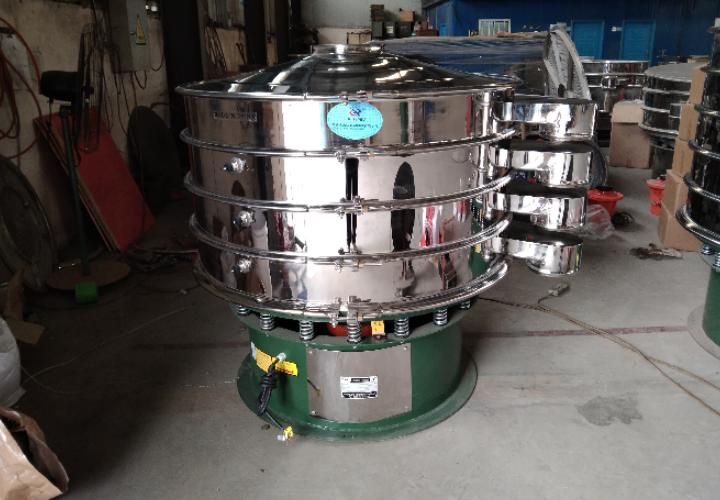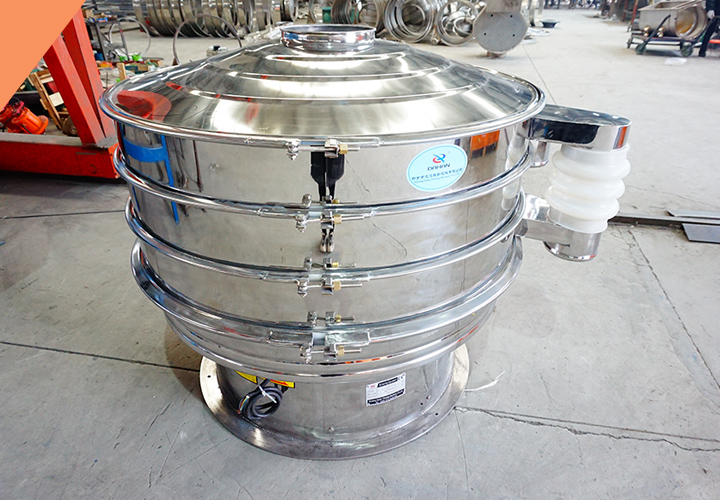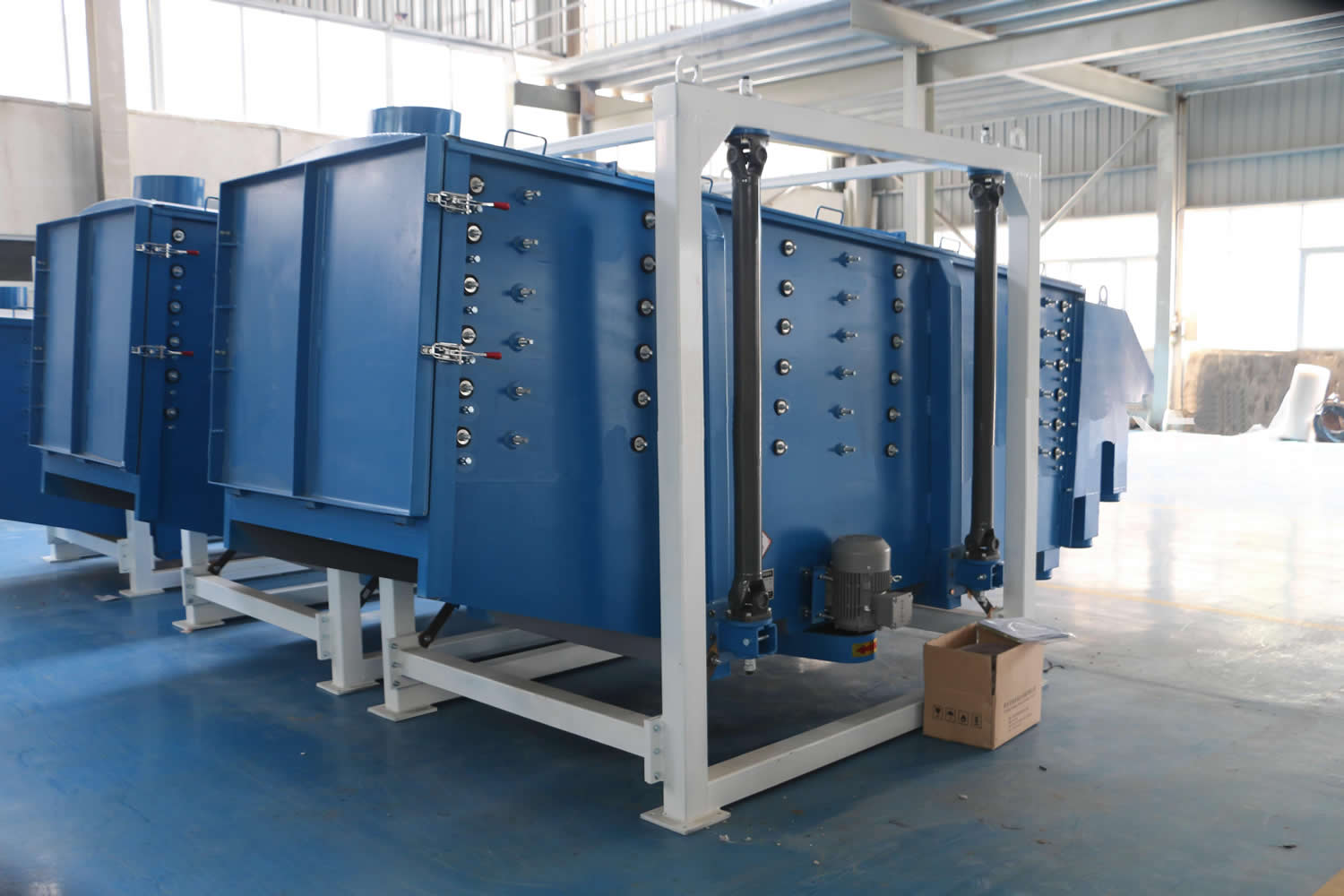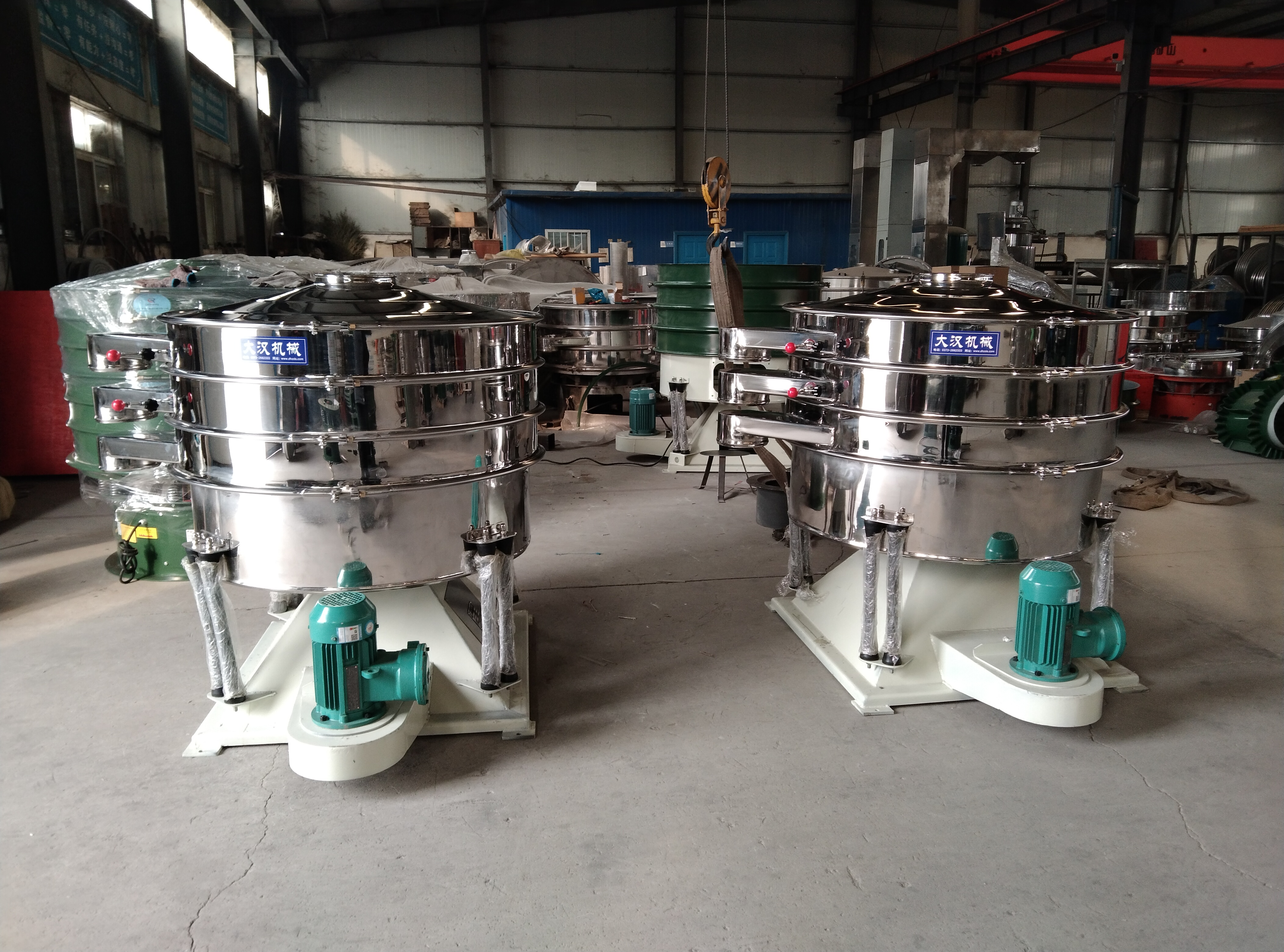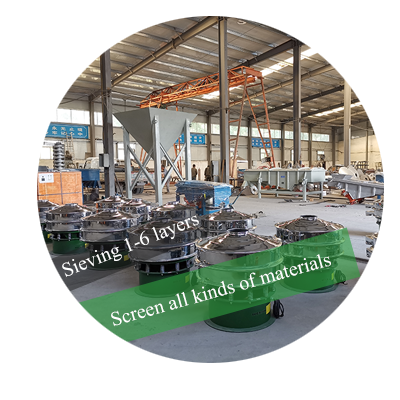Semsam Seed Sieve
![[field:title/]](/uploads/250731/1-250I11GI0H0.jpg)
Callback
| Mesh size: | 2-500 mesh |
| Capacity: | 100-3300kg/h |
| Number of layers: | 1-6 layers |
Made of food-grade stainless steel (such as 304 material), corrosion-resistant and rust-proof
organic impurity removal rate can reach 95%, and inorganic impurity removal rate can reach 98%
2-6 different gradings can be achieved
What is Semsam Seed Sieve
Raw sesame seeds often contain impurities such as soil, sand, metal fragments, and glass shards. These impurities not only affect the taste but may also harm human health. Semsam Seed Sieve can effectively remove these impurities, ensuring the food safety of sesame products. The product sieve mesh range is 20-400 mesh, with a production capacity of 200-500 kg/h for small-scale production, 500-1000 kg/h for medium-scale production, and 1000-3500 kg/h for large-scale production.
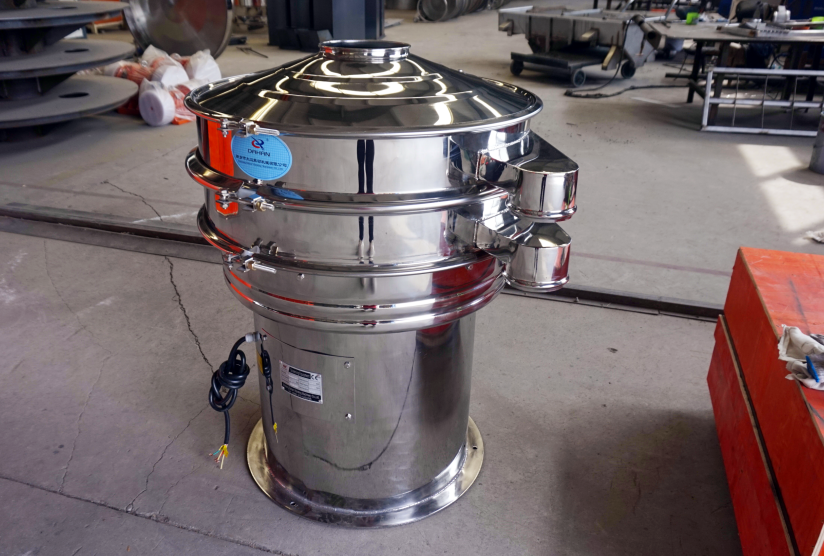
Sesame seed sieves are primarily categorized into circular vibrating screens, linear vibrating screens, and ultrasonic vibrating screens, each with its own unique advantages. Circular vibrating screens are suitable for fine screening and handling a variety of materials; linear vibrating screens excel at high throughput and screening accuracy, making them suitable for continuous, large-scale sesame grading; and ultrasonic vibrating screens, based on traditional vibrating screens, effectively solve the common problem of screen clogging in sesame powder screening by using ultrasonic waves, significantly improving the screening accuracy and pass rate of fine powders.
What are the types of Semsam Seed Sieve?
Sesame seed sieves are primarily used for screening and grading sesame seeds. Based on their operating principles and structural features, common types include circular vibrating screens, linear vibrating screens, and ultrasonic vibrating screens. The following describes these three types of sieves in terms of their characteristics and parameters.
Circular Vibrating Screen
Features: High screening efficiency. Circular vibrating screens utilize the principle of three-dimensional motion of the material on the screen surface, allowing the material to be fully dispersed and in contact with the screen mesh, improving screening efficiency. Suitable for a variety of screening needs, including dry, wet, fine, and coarse screening, they can handle a wide range of materials, including powders, granules, and liquids. The ring clamp design allows for quick and easy screen replacement, minimizing downtime. The compact structure and small footprint facilitate integration into production lines. They operate smoothly, are quiet, and require relatively simple maintenance.
Parameters: The number of screening layers ranges from 1 to 5, customizable upon request. Screen materials are typically made of stainless steel or carbon steel. Depending on the size of the screen, the processing capacity ranges from tens of kilograms to several tons per hour. Power output ranges from 0.75 kW to 4 kW. Screen mesh sizes typically range from 2 to 500 mesh.
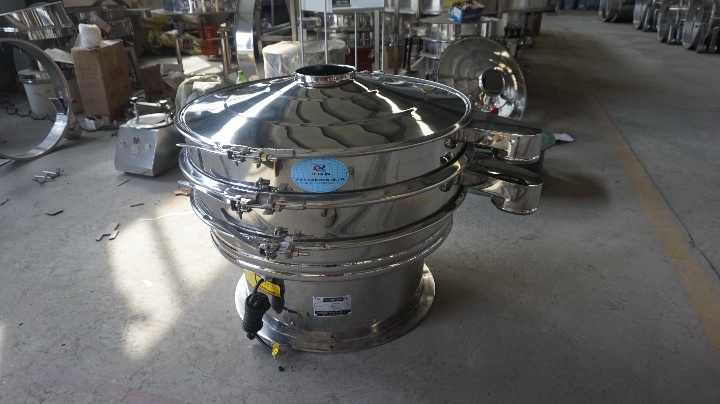
Linear Vibrating Screen
Features: High processing capacity. Linear vibrating screens use a linear motion of the material on the screen surface, resulting in a long screening path, making them suitable for large-scale, continuous screening of materials. High screening accuracy ensures that materials flow evenly along a straight line across the screen surface, facilitating precise grading and preventing material mixing. The device features a simple structure and is easy to maintain, resulting in a low failure rate and convenient daily maintenance. A sealed design effectively prevents dust from escaping.
Parameters: Screen width ranges from 0.5m to 2m. Screen length ranges from 1m to 5m. Screen materials include stainless steel and high-manganese steel. Depending on the size, the processing capacity ranges from a few tons to tens of tons per hour. Power ranges from 1.5kW to 11kW. Screen mesh sizes range from 2-300 mesh.
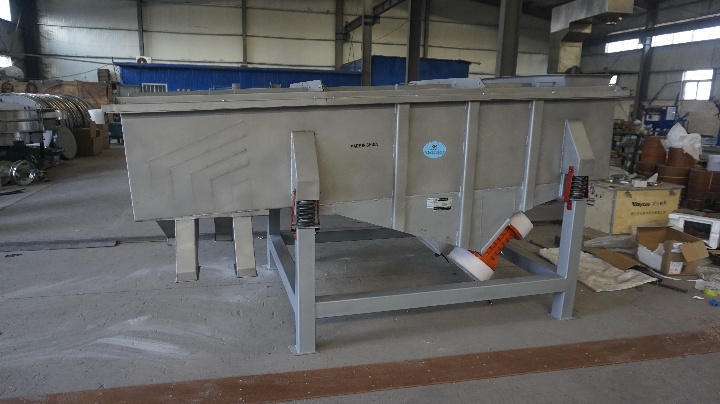
Ultrasonic Vibrating Screen
Features: Ultrasonic vibrating screens eliminate screen clogging. Ultrasonic vibrating screens incorporate an ultrasonic vibration device into traditional vibrating screens, effectively solving the problem of screen clogging caused by material adhesion and agglomeration during fine powder screening. They also offer higher screening accuracy. The microscopic vibrations of ultrasound disperse ultrafine powder particles, preventing agglomeration, thereby improving screening accuracy and pass rate. Screening efficiency is significantly improved, making it particularly suitable for screening difficult-to-screen materials such as those with low specific gravity, moisture absorption, adhesion, and static electricity. This increased screening efficiency increases production output, achieving higher screening yields under the same conditions. Reduced screen wear and friction between the material and the screen extend screen life.
Parameters: Screen mesh sizes range from 80-600 mesh, even down to the micron level, making it particularly suitable for high-precision, fine powder screening. Ultrasonic power supply power ranges from 50W to 1000W.

What are the advantages of the Semsam Seed Sieve?
Semsam Seed Sieve plays a vital role in the sesame processing process. For the sesame itself, the equipment can improve the quality of the sesame, and in terms of efficiency, the equipment has a high degree of automation and reduces the burden on subsequent processing after screening.
Improved Product Quality: The Sesame Seed Sieve effectively removes all impurities from sesame seeds, including sand, dirt, grass seeds, insect-infested grains, and other non-sesame particles. Fine screening allows precise grading of sesame seeds of varying sizes and plumpness, resulting in purer, more uniform sesame raw materials. This means that subsequent further processing steps, such as sesame oil, sesame paste, or baking, can utilize higher-quality raw materials, directly impacting the taste, flavor, and appearance of the final product. For example, removing impurities prevents the clarity of sesame oil or the roughness of sesame paste; uniform particles ensure even heating during baking, preventing burnt or hardened sesame seeds.
Improving Production Efficiency and Automation: Using a Sesame Seed Sieve significantly improves automation and production efficiency in sesame processing. The Sesame Seed Sieve is capable of processing large quantities of sesame seeds continuously and in batches. Different types of Sesame Seed Sieve (such as circular and linear vibrating screens) are designed to meet varying processing requirements, enabling suitable equipment for operations ranging from small workshops to large production lines.
Simplifying Subsequent Processing: Screening and grading sesame seeds early in the processing process streamlines subsequent processing steps. Effective impurity removal reduces the burden of subsequent cleaning, drying, pressing, or grinding processes, and can even eliminate some intermediate steps. For example, if the sesame seeds are already very pure, multiple washing steps may not be necessary, saving time and resources. Furthermore, uniform particle size also facilitates stable operation of subsequent equipment, reducing the risk of blockage or uneven processing.
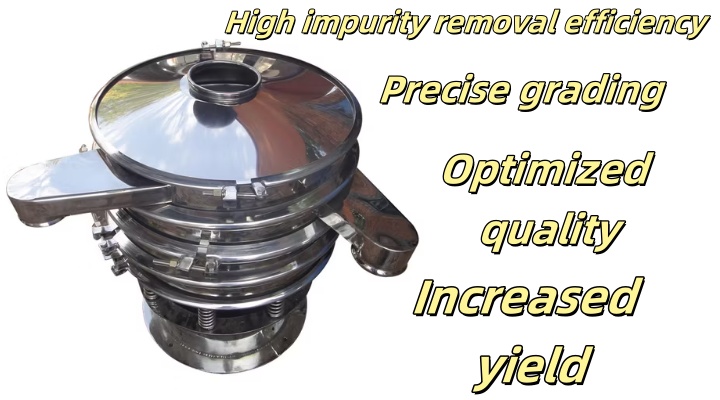
Semsam Seed Sieve model parameters
|
Model |
Dimensions (mm) |
Power |
Number of screen layers |
Screen specifications (commonly used) |
Production capacity |
|
XZS-400 |
φ400×600 |
0.18kW |
Single/double layer |
0.5mm, 0.8mm |
100–300kg/h |
|
XZS-600 |
φ600×800 |
0.25kW |
Single/three layers |
0.4–1.2mm replaceable |
200–500kg/h |
|
XZS-800 |
φ800×950 |
0.55kW |
Multi-layer |
Multi-mesh combination |
500–800kg/h |
What is the working principle of semsam Seed Sieve?
The core operating principle of the Sesame Seed Sieve is the use of vibration to classify and remove impurities from sesame seeds. Whether using a circular vibrating screen, a linear vibrating screen, or an ultrasonic vibrating screen, they all use a specific vibration pattern to induce movement in the sesame particles on the screen surface, thereby achieving separation.
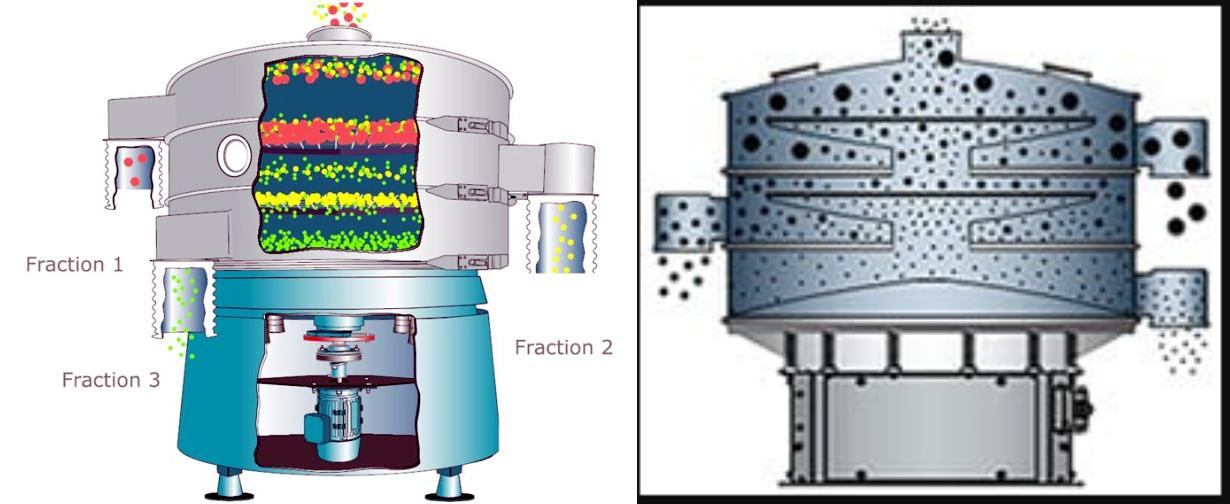
Vibration-induced motion: This is the underlying principle of all Sesame Seed Sieve systems. The sieve typically contains a vibration motor or exciter. When operating, these components generate high-frequency, low-amplitude vibrations, which are transmitted to the screen box and the screen mesh attached to the screen box. The vibrations cause the sesame particles to jump or roll along the screen surface. This movement reduces friction between particles and between the particles and the screen mesh, facilitating particle loosening and stratification. Screen aperture enables classification and impurity removal: The screen is densely packed with apertures of specific sizes. This is the key to the sesame seed sieve's classification and impurity removal capabilities. Small particles pass through, while large particles remain. As sesame seeds move across the screen, particles smaller than the screen aperture (such as fine sesame seeds, dust, and dirt) pass through the apertures and fall to the lower layer. Particles larger than the screen aperture (such as plump sesame seeds, large impurities, grass seeds, and stones) remain on the screen and continue to move forward.
Multi-layer screens achieve multi-level sorting: Many sesame seed sieves utilize a multi-layer screen structure, with each layer having a different aperture size. Typically, the upper screen has a larger aperture to remove large impurities, while the lower screen has a smaller aperture to separate sesame seeds of different sizes or remove finer impurities. As the material moves downward, passing through screens of varying apertures layer by layer, precise multi-level sorting is achieved.
What are the structural features of a semsam Seed Sieve?
The semsam Seed Sieve mainly consists of a screen box (or sieve body), a vibrating device, and a screen. The vibrating device provides power to vibrate the screen box and screen, while the screen is responsible for grading and removing impurities from the sesame seeds based on their aperture size.
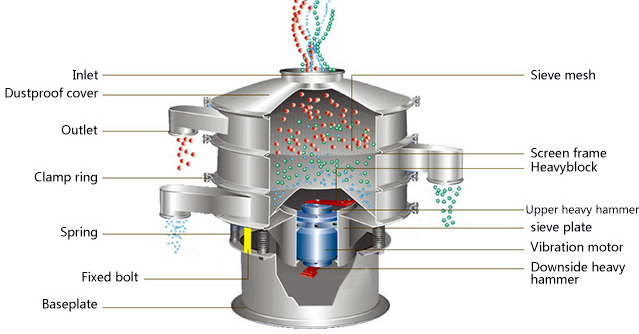
Screen frame: The frame that supports the screen, generally welded with steel to ensure that the overall structure is strong and stable.
Screen: It is composed of stainless steel wire mesh or punched plate, and the screen aperture is customized according to the sesame particle size and screening requirements.
Vibration device: includes a vibration motor and an eccentric block, which generates vibration force through rotation, causing the sesame to continuously jump and move on the screen to achieve screening.
The support spring or shock absorber is installed under the screen frame to support the screen body and absorb vibration to reduce the impact on the ground.
Feed inlet and discharge port: The feed inlet is used for sesame to enter the screening machine, and the discharge port is divided into a qualified particle outlet and an impurity outlet to discharge different materials respectively.
Recommended mesh number of semsam Seed Sieve
|
Screening purpose |
Recommended sieve hole (mm) |
Corresponding mesh number (approximate) |
|
Removal of large impurities (straw, stones) |
>2.0mm |
<8 mesh |
|
Removal of small seeds, broken seeds |
1.0–1.4mm |
14–18 mesh |
|
Removal of dust, fine impurities |
<0.85mm |
>20 mesh |
|
Selected particle size classification |
1.6mm upper sieve + 1.2mm lower sieve |
12 mesh-16 mesh combination |
The role of semsam Seed Sieve in sesame screening process
In the sesame processing technology, raw sesame is often mixed with sand, straw, stones, unripe seeds, broken seeds and light shells and other impurities. If it is directly put into the frying or oil pressing stage without sufficient screening, it will not only affect the quality and taste of the finished sesame oil, but also cause equipment wear or blockage. Therefore, Semsam seed screen plays a key role in the entire sesame primary processing.
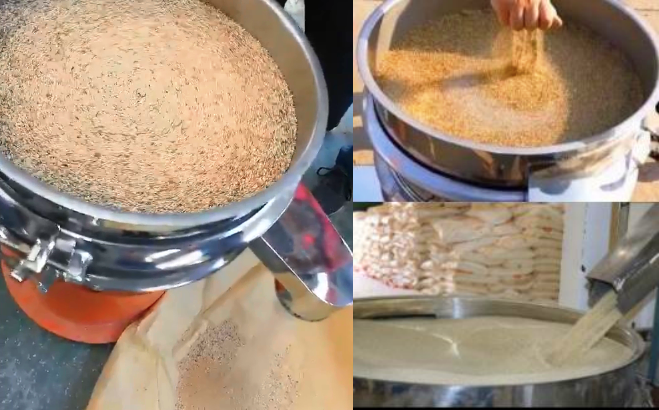
Remove all kinds of impurities: Whether it is large pieces of straw soil, fine sand and dust, or even heterochromatic grains and metal impurities that are difficult to distinguish with the naked eye, they can be effectively separated through different types of Semsam seed screens.
Improve the purity of sesame: After multiple screenings, the purity of sesame can be greatly improved, which is directly related to the taste, flavor and hygiene safety of the final product.
Ensure product quality and safety: Removing harmful impurities (such as stones and metals) is the key to ensuring consumer food safety; removing moldy and heterochromatic grains can improve the overall quality and commodity value of sesame.
What can semsam Seed Sieve be used for?
The application of Semsam seed screen in sesame screening is mainly reflected in the process of cleaning, grading and pre-treatment of sesame in families or small oil mills. Its key role is to remove impurities, improve purity, protect downstream equipment (such as oil presses) and improve the quality of the final product.
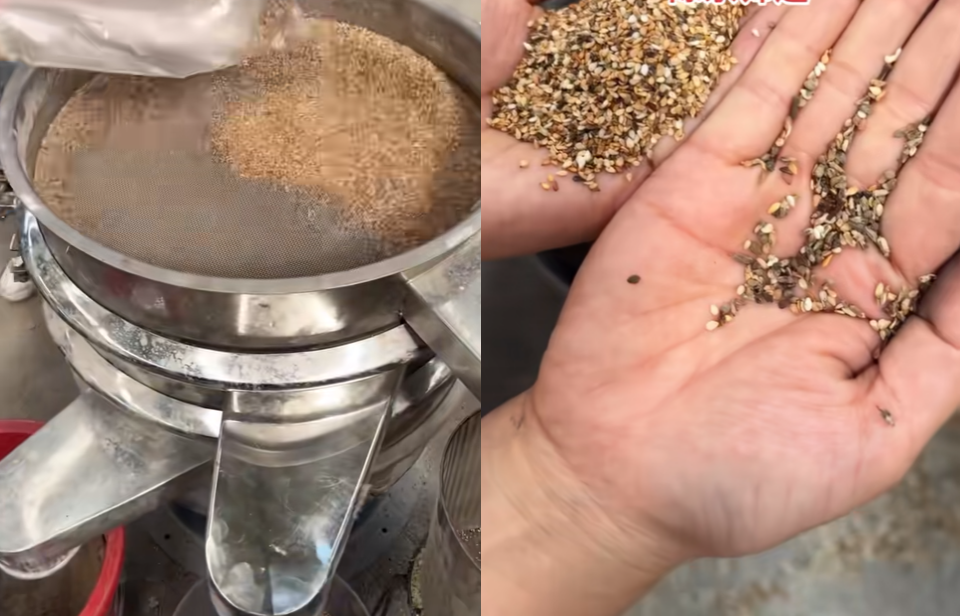
Before sesame oil pressing or frying, sesame usually needs to be sieved to remove impurities such as fine sand, straw, and seed shell fragments. As the core tool in this step, Semsam seed screen is equipped with a fine and uniform screen. Through manual or electric vibration, sesame seeds are layered and moved on the screen surface. Small particles or debris fall from the screen holes, while intact sesame seeds remain on the screen surface to achieve primary screening.
In the entire process, the sesame screening machine plays a role in accurate grading, effective impurity removal, purity improvement, and protection of subsequent frying and oil pressing equipment. After treatment, the impurity content of sesame seeds is reduced from the original 2.3% to less than 0.1%, which significantly improves product quality and oil output efficiency.
Material application examples of semsam seed sieve
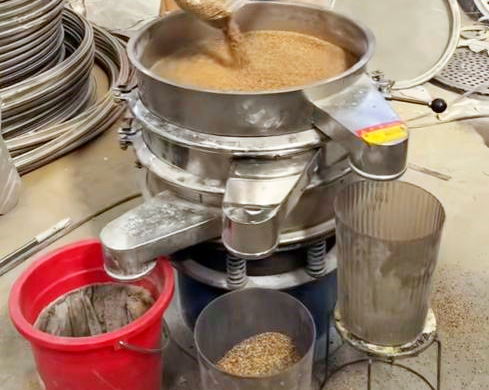
Before sesame oil pressing or frying, sesame seeds usually need to be sieved to remove impurities such as fine sand, straw, and seed shell fragments. As the core tool in this step, the Semsam seed sieve is equipped with a fine and uniform screen. Through manual or electric vibration, the sesame seeds are moved in layers on the screen surface, small particles or debris fall from the screen holes, and the complete sesame seeds remain on the screen surface to achieve primary screening.
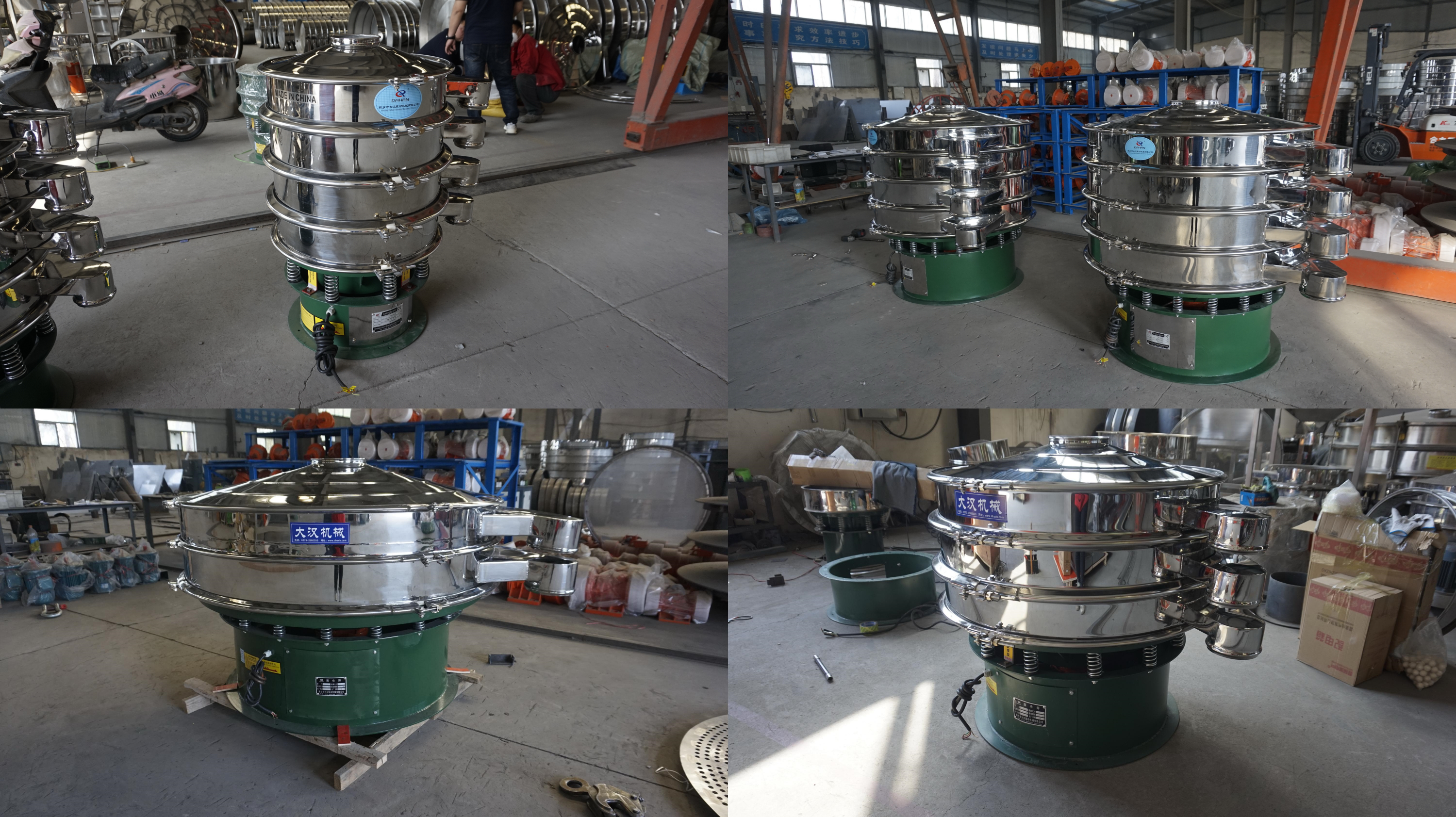
Taking a family oil press as an example, 500 grams of raw sesame seeds are pre-screened with a matching stainless steel seed screen. The screening process lasts about 2-3 minutes and can remove about 2% of fine impurities and broken seeds. This step significantly reduces the residue blockage during the oil pressing process and avoids the wear of the oil pressing screw by gravel. At the same time, the surface of the sieved sesame seeds is cleaner, the frying process is more uniform, and the oil yield and oil quality are improved.
-
Sesame sieve is also called sesame sieve machine or sesame sieving...
-
Gyratory Vibrating Screen is a device used to screen and grade granular or powdery materials ...
-
Swing Vibrating Screen is a high-precision fine-particle screening equipment ...
-
Vibrating Machine To Separate Baobab Pulp From It’S Seed
During the process of separating the vibrating machine to separate baobab pulp from it’S Seed, due to ...
-
Salt Classifying with Vibro Sifter
Salt classifying with vibro sifter refers to the process of using multiple layers of scre ...
-
Application of Apatite Vibrating Screen
Apatite vibrating screen is used for screening apatite, mainly because apatite materia ...
-
Drained vegetable vibrating screen
Drained vegetable vibrating screen is a screening device used for the prelimina ...

Email:
sale@xxdahan.com
WhatsApp:
+86 15236742901
Add:
1000m West of Forest Park,Yanjin County,Xinxiang City,Henan Procince,China.

